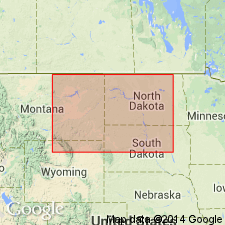
- Usage in publication:
-
- Dunham salt
- Modifications:
-
- Named
- Dominant lithology:
-
- Salt
- Mudstone
- Anhydrite
- AAPG geologic province:
-
- Williston basin
Summary:
Named as a formation in the Williston basin, ND and MT. Origin of name not given, but presumably is from the Hunt-Dunham No. 1 well, NW1/4 NW1/4 sec 24, T155N, R90W, Mountrail Co, ND, which is shown on a cross section illustrating the correlation of the formation. Type section not designated. Occupies central part of Williston basin, western ND and northeasternmost MT. Formerly an undifferentiated part of Spearfish formation. Described as very similar to Pine salt (new) in drill cuttings and on the various mechanical logging devices [Pine salt described as an evaporite deposit in which salt is predominant with lesser amounts of anhydrite and mudstone]. Maximum thickness [from isopach map] somewhat more than 100 ft. Overlain by Piper formation; overlies Saude formation (new). Is assigned a Jurassic age based on distributional pattern, which is similar to that of overlying Piper formation. No faunal evidence to support assignment. Correlated northward with Watrous "red beds" in CN.
Source: GNU records (USGS DDS-6; Denver GNULEX).
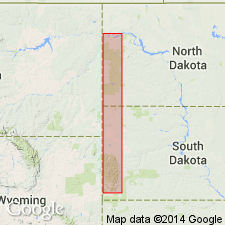
- Usage in publication:
-
- Dunham salt
- Modifications:
-
- Overview
- Revised
- AAPG geologic province:
-
- Williston basin
Summary:
Subdivided Spearfish formation in Williston basin into (descending) units A-D. Unit A equivalent to Dunham salt of Zieglar (1955). Its restricted location [in west-central ND] and its lithology suggest a closer affinity to the Triassic than to overlying Jurassic. Assigned to the Upper Triassic. See columns 68 and 69.
Source: GNU records (USGS DDS-6; Denver GNULEX).

- Usage in publication:
-
- Dunham salt*
- Modifications:
-
- Revised
- Overview
- AAPG geologic province:
-
- Williston basin
Summary:
Dunham salt of Zieglar (1955) is considered a facies of Piper formation of Jurassic age because its lithology represents a distinctly different environment from that of underlying Saude formation of Zieglar (1955). Is Middle Jurassic in age.
Source: GNU records (USGS DDS-6; Denver GNULEX).
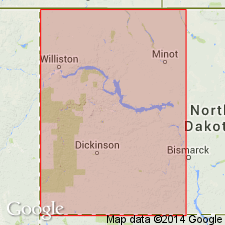
- Usage in publication:
-
- Dunham Salt Bed*
- Modifications:
-
- Revised
- AAPG geologic province:
-
- Williston basin
Summary:
Throughout western ND, Spearfish Formation is overlain by a series of anhydrite and salt beds designated as Poe [Evaporite] Member of Nesson Formation by Nordquist (1955). Geologists at the ND Geological Survey, however, believe the term Nesson Formation should be abandoned [in western ND] and the term Piper Formation used in its place. Since the term Poe Member is useful in describing the lower evaporite unit it will be referred to as Poe Member of Piper Formation. Included in lower part of the type Poe is a basal salt unit named Dunham Salt by Zieglar (1955). The name is retained to identify this salt unit within Poe Member.
Source: GNU records (USGS DDS-6; Denver GNULEX).
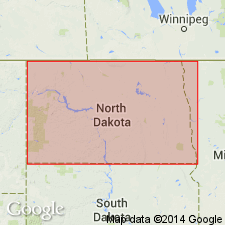
- Usage in publication:
-
- Dunham Salt Member
- Modifications:
-
- Revised
- AAPG geologic province:
-
- Williston basin
Summary:
Considered a member of Piper Formation. Overlain by Poe Member [restricted]; underlain by Spearfish Formation. Is Jurassic and Middle Jurassic in age.
Source: GNU records (USGS DDS-6; Denver GNULEX).
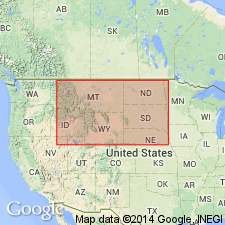
- Usage in publication:
-
- Dunham Salt
- Modifications:
-
- Revised
- AAPG geologic province:
-
- Williston basin
Summary:
Excluded from Piper Formation (restricted) and returned to formational rank in the ND part of Williston basin. Overlain conformably? by Piper Formation; overlies unconformably Spearfish Formation. Is Middle Jurassic in age. See Columns 17-19.
Source: GNU records (USGS DDS-6; Denver GNULEX).
For more information, please contact Nancy Stamm, Geologic Names Committee Secretary.
Asterisk (*) indicates published by U.S. Geological Survey authors.
"No current usage" (†) implies that a name has been abandoned or has fallen into disuse. Former usage and, if known, replacement name given in parentheses ( ).
Slash (/) indicates name conflicts with nomenclatural guidelines (CSN, 1933; ACSN, 1961, 1970; NACSN, 1983, 2005, 2021). May be explained within brackets ([ ]).

